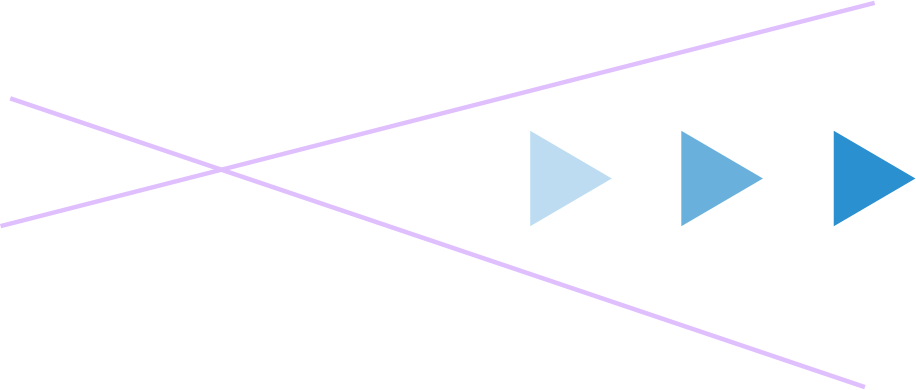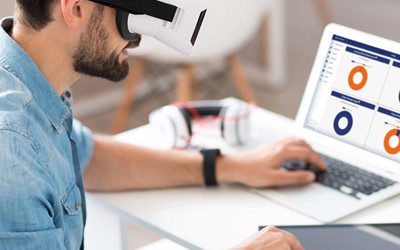5 Virtual Reality Training Misconceptions
Despite having many benefits, there are some common misconceptions that stop organisations from embracing VR technology. Here we debunk the top 5 most prevalent ones.
Posted 19 May 2022
1. VR is a new technology
One of the biggest myths is that virtual reality is a new technology. Actually it can be traced way back to 1838, when Sir Charles Wheatstone was the first to describe stereopsis: the perception of depth and 3-dimensional structure obtained on the basis of visual information deriving from two eyes by individuals with normally developed binocular vision.
Fast forward to the 1960’s and already in that short timeframe we see that VR has evolved enough to be used by the military globally, enabling them to remotely look at hazardous situations. A remote camera imitated the head movements so the user could look around the setting. The Air Force also use it for flight simulation training. There are countless examples throughout history of VR technology being used in many industries and it’s a well-established training tool.
The “modern” VR that we are more familiar with is now easier to access, slicker and gone are the days you have to be a big corporation or established industry to benefit from this type of training. Many companies have developed their own VR headsets, some even using your mobile phone to help facilitate the VR experience. With eNetReality you get the best of both worlds as you have the option to use a headset but it can also be used on a desktop computer, without compromising the learners experience.
2. VR is an expensive fad
People always assume VR is too expensive, complicated or challenging to deploy outside of a small group. But the truth is VR experiences are now scalable, realistic and can be used no matter where you or your team are located. This makes it an extremely cost-effective alternative compared to traditional training. VR gives your employees hands on training experiences instead of just theory, so they’re better prepared to for their role in real life. It also helps them learn faster and put into practice what they’ve learned more quickly, which will save you money in the long run. So stop looking at VR as an expense and think of it as more of an investment not only for your workforce but for your business.
3. Creating a VR course can only be done by software developers
Sure, back in the olden days creating VR courses was exclusively the domain of specialists in the field and required copious amount of coding knowledge, but thankfully that is no longer the case. In fact, with eNetReality creating VR courses has never been easier or more accessible. The intuitive editor enables non-technical people to create VR training without a single line of code. You have the ability to upload your own your own imagery, 360° images, 3D models, or import library footage to get the content you need. You can also create assessments that can include options such as hotspots, quizzes, time-based events and more! You are literally in control of every aspect of your training content, the possibilities are only limited by your imagination not your technical ability!
4. VR locks you back into a classroom like model
Actually this couldn’t be any further from the truth. VR training actually allows the learner to take control of their training in a way like never before. As it can be used remotely it doesn’t matter where they are in the world. With eNetReality all the learner has to do is access/download the training material and use it whenever and wherever they want. This past year has forced everyone to work in a different way, moving from the office to a home environment. It’s never been as important as it is now to have the ability to cooperate with colleagues over large distances, to develop training experiences in a safe environment.
5. The VR environment distracts the learner
Actually studies have shown that using VR technology for training helps the learner remember things better because they are engaging with real life situations or scenarios. A fully immersive environment taps into the learner’s senses, engaging emotions and the cognitive function of the brain which helps with learner retention.
Researchers claim that learners on a whole forget around 50 percent of what they learn right after standard training. VR training helps speed up the time it takes to learn a process and allows you to make errors in a safe environment. An example of that can be found in a study by Yale University which tested how VR training compared to conventional teaching methods when training surgical residents to perform a gallbladder dissection. The study found that the VR group performed the surgery 29 percent faster and were six times less likely to make a mistake during the procedure. Providing a VR training environment can give the learners the confidence they need to take their newly learned skill and use it in the real word. Remember that one simple VR training environment can replicate a whole science lab or construction site.
The time is now
Virtual Reality isn’t just a faddy expensive technology, it’s a way to significantly improve training. It’s a way for your learners to perform their roles to the highest standard and develop expertise quickly and efficiently. If you’re looking to create a VR training project and not sure how to start, get in touch, we’d love to help you get on the road to better training.
30-day FREE Trial of eNetReality
Start your VR experience today and begin to quickly develop and create your own fully-immersive assessments - no coding required!
Recent Posts
eCom Learning Solutions: Staying ahead in a constantly evolving landscapeIs your work changing, or just your tools? A question for the modern workforce
What is competency? And why it matters in the workplace
Bridging the integrity gap: A proactive approach with eNetEnterprise
Proving Learning Works: Trends Driving Workplace Training in 2025



